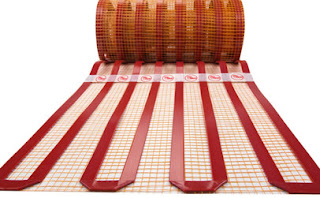Floor Heating System – Getting The Right System Installed
Even though underfloor warming can be introduced in homes of any shape and size, there are areas of strength for including a warmed floor framework in your new form at the planning stage.
Underfloor or infloor
heating installation is simple, and its energy efficiency will
significantly reduce your energy costs. To make life easier, our underfloor
heating kits are made to fit any kind of floor structure. By eliminating
radiators, you also save a lot of space.
Underfloor
heating can be divided into two main categories: one that is powered by your
home's electricity mains and the other that uses a manifold for heated floors with hot water from your boiler. While both are great ways to heat
your home, here are some advantages and disadvantages to consider.
 |
| Heated Floors |
Is underfloor
heating difficult to use?
Warm water or
wet underfloor heating kits are designed to be simple to use and install by the
manufacturer. With the expansion of a brilliant indoor regulator, you can
likewise control each part of your warming framework from a distance.
Your warmed
floor framework can be parted into discrete warming zones that can be
controlled or de-enacted autonomously meaning you possibly heat your home when,
and where it is required, no lost cause.
Conclusion



Comments
Post a Comment